Last updated on March 14, 2024
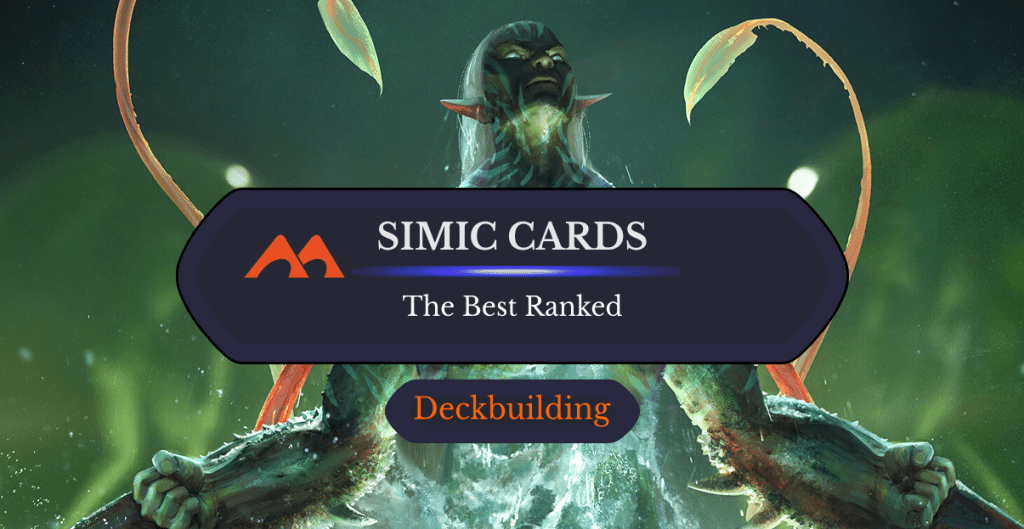
Neoform | Illustration by Bram Sels
Simic is arguably the most powerful color pair in Magic, or at least in contention for the title. The pairing of green with blue, Magic’s historically best color, has created terrifying threats that easily dominate games.
With so many broken cards, it’s no wonder it’s an incredibly popular color pair to build and has some groan-worthy commanders when you see them across the table. But which Simic cards are the best?
Let’s find out!
What Are Simic Cards in Magic?
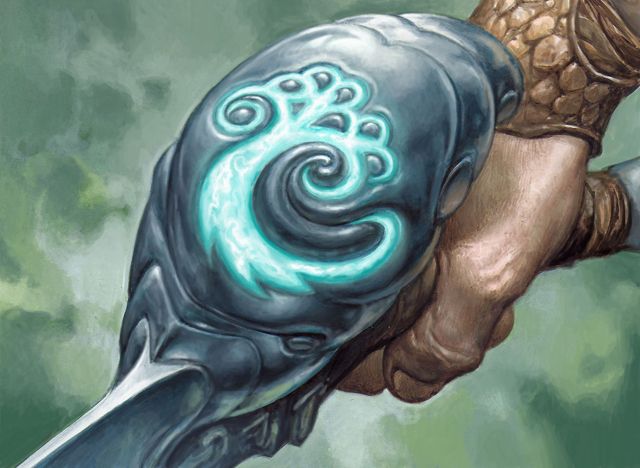
Simic Charm | Illustration by Zoltan Boros
Simic cards are cards that have a blue-green color identity. The name comes from the guild on Ravnica whose primary focus is research on biological phenomena and using that research to further themselves via mutation.
Flavorfully, Simic cards often push the boundaries of nature. Augmenting nature, typically via creatures but also by interacting with mana. To determine the best Simic cards, I’m looking for efficiency first and foremost – the most impact you can have for the least mana. Simic excels at this, as a core tenet of green’s design is big monsters at lower costs.
Because of the nature of blue and green, cards that generate either a mana advantage or card advantage are valuable as well. It’s simply a function that comes from the two enemy colors coming together that make Simic as powerful as it is.
#35. Kiora’s Follower
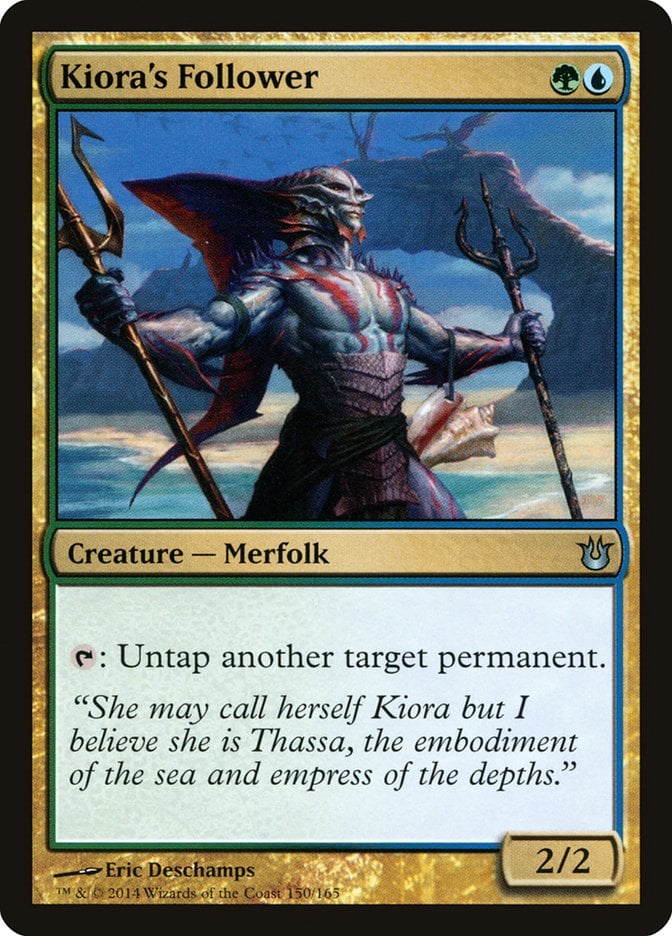
Kiora's Follower is a humble little creature. It acts as a 2-mana accelerant by untapping lands, which is especially potent with Utopia Sprawl and similar effects. Its true value comes from utility as a combo piece; something as basic as a free untap can be powerful indeed.
#34. Quandrix Apprentice
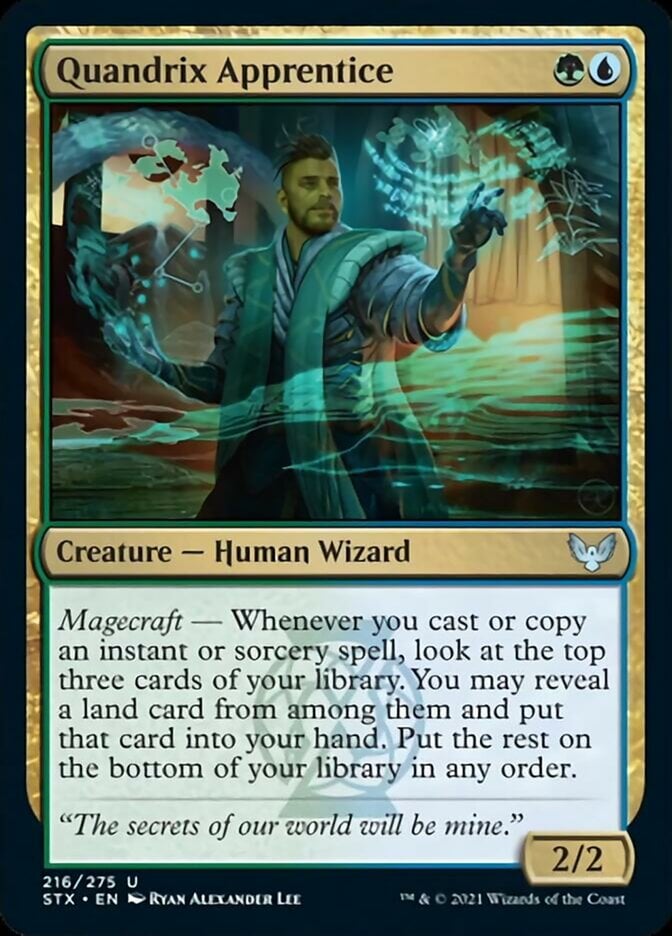
While Simic boasts a menagerie of creatures to unleash, it’s no stranger to slinging spells. Quandrix Apprentice provides decks that can trigger magecraft with a ton of consistency, assuring them all the land drops they want.
#33. Simic Charm

Each guild has a charm, and Simic Charm is one of the stronger ones. It’s a flexible interactive spell; bouncing a creature can result in strong tempo, but the Giant Growth mode is functionally a removal spell if you get into combat. Blowing out removal rounds this out as an effective card.
#32. Master Biomancer
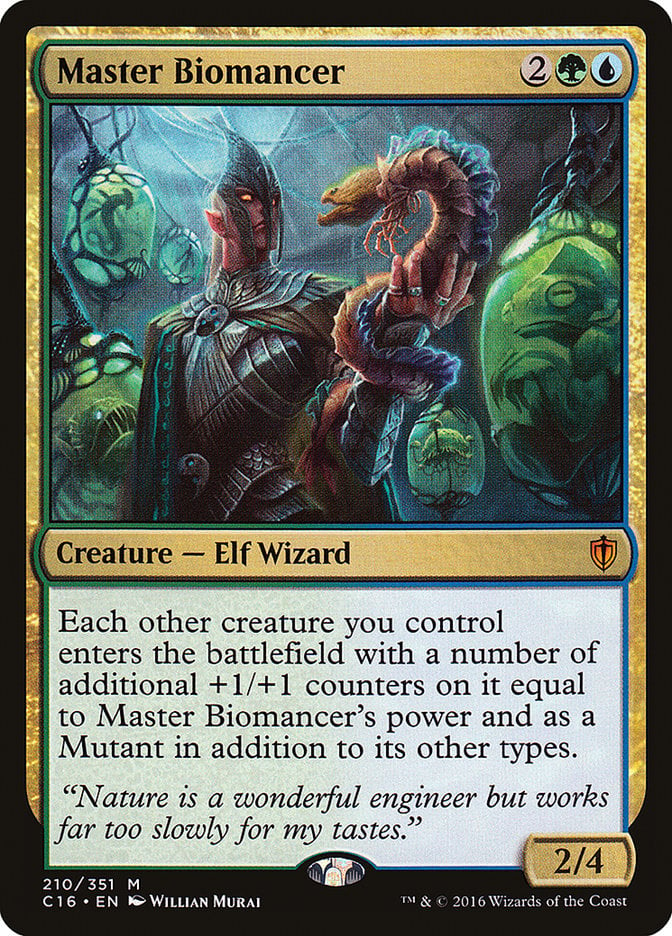
In Magic, biological augmentation is often expressed via +1/+1 counters. Master Biomancer excels at getting your creatures large. Not only does it fuel +1/+1 counter synergies, but this card benefits from them by getting larger and spreading even more counters.
#31. Keruga, the Macrosage

We can all agree that the companion mechanic was broken. The errata that makes you pay to put the companion from your sideboard into your hand hit Keruga, the Macrosage the hardest since it was already the slowest companion due to its deckbuilding restriction. But a bulky fighter that refills your hand can still be a potent threat, especially when you skirt the restriction with cards like Brazen Borrower and Fire / Ice to interact in the early turns.
#30. Progenitor Mimic

Clone effects can be quite strong. Progenitor Mimic is on the expensive side but pays off the mana investment by generating an army over time. This is especially potent when copying something with a powerful ETB ability, like Mulldrifter or Scourge of Fleets.
#29. Decisive Denial
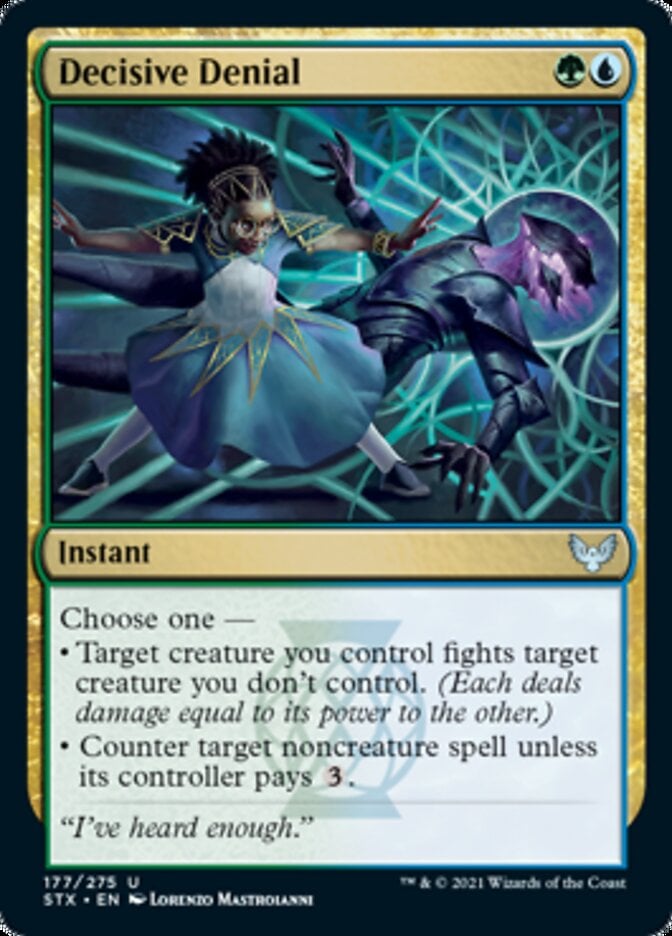
Decisive Denial has a simple, elegant design. It’s a modal spell that lets you choose between a fight spell or a soft counter, bringing green and blue into a compact package. In a deck with the creatures to back the fight side, this offers lots of flexibility with your open mana.
#28. Bred for the Hunt

Card draw and damage go hand in hand in Simic. Bred for the Hunt offers a powerful payoff for +1/+1 counter decks by giving them card advantage. This effect is easy to facilitate with cards like Herald of Secret Streams and Skatewing Spy giving your creatures evasion.
#27. Biomass Mutation
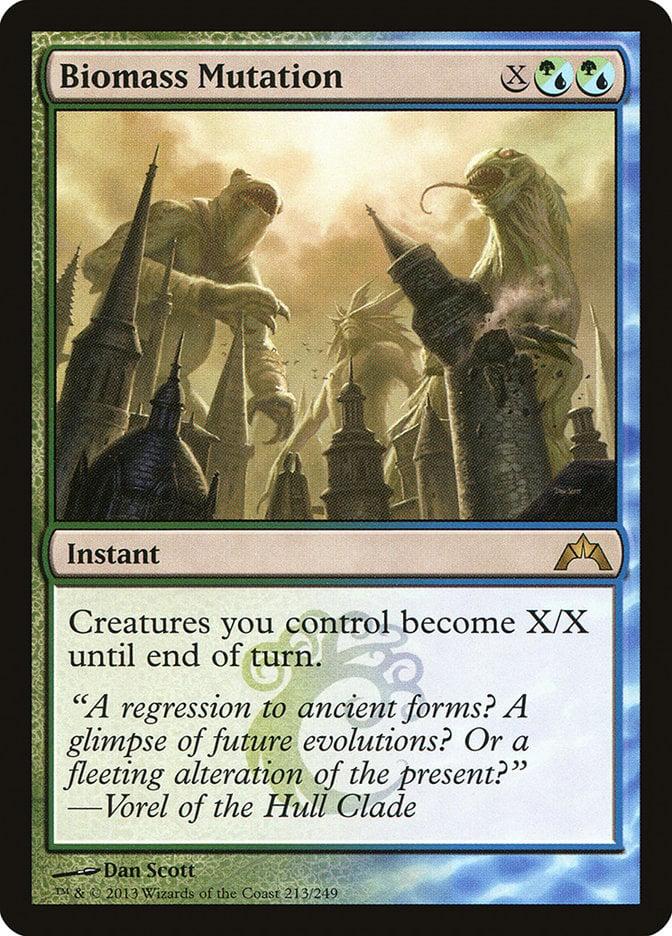
Biomass Mutation can be a powerful finisher for token decks or other strategies going wide. Pumping your team’s base power works wonders with counters and other augments, but making small creatures big can drop unexpected damage.
#26. Coiling Oracle
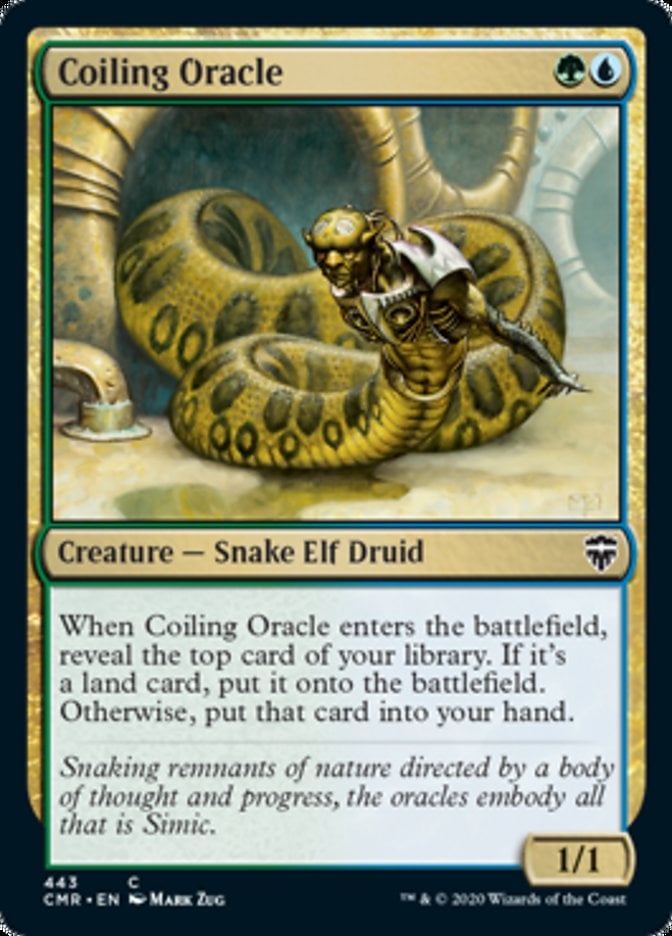
I love this little snake. Coiling Oracle is just good value, either replacing itself or ramping you. Power creep has made this less appealing, but Coiling Oracle is still perfectly respectable in decks that care about exploiting ETB abilities.
#25. Lonis, Cryptozoologist
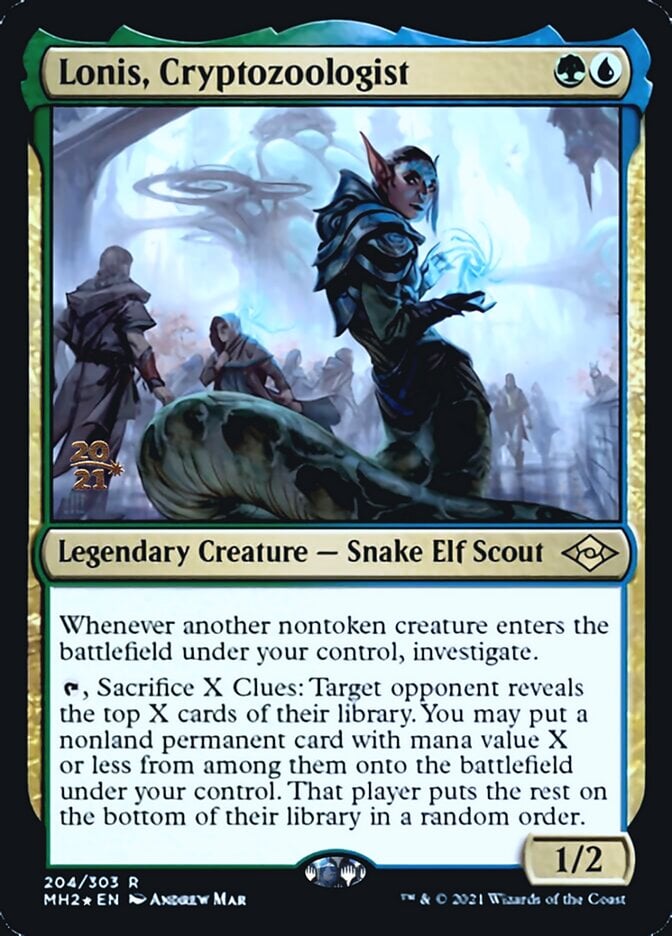
Lonis, Cryptozoologist makes lots of rectangles, which is very nice in modern Magic. The Doctor Who decks brought an influx of cards that care about Clues, giving this a boost; a creature that makes lots of artifact tokens is easily exploited.
#24. Fathom Mage

Fathom Mage is a fantastic payoff for counter decks. A 4-mana 1/1 looks weak, but this draws a surprising number of cards with relatively little effort, especially when paired with effects like Master Biomancer and Tribute to the World Tree. Your opponents have to kill this, or it runs away with the game.
#23. Nissa, Steward of Elements
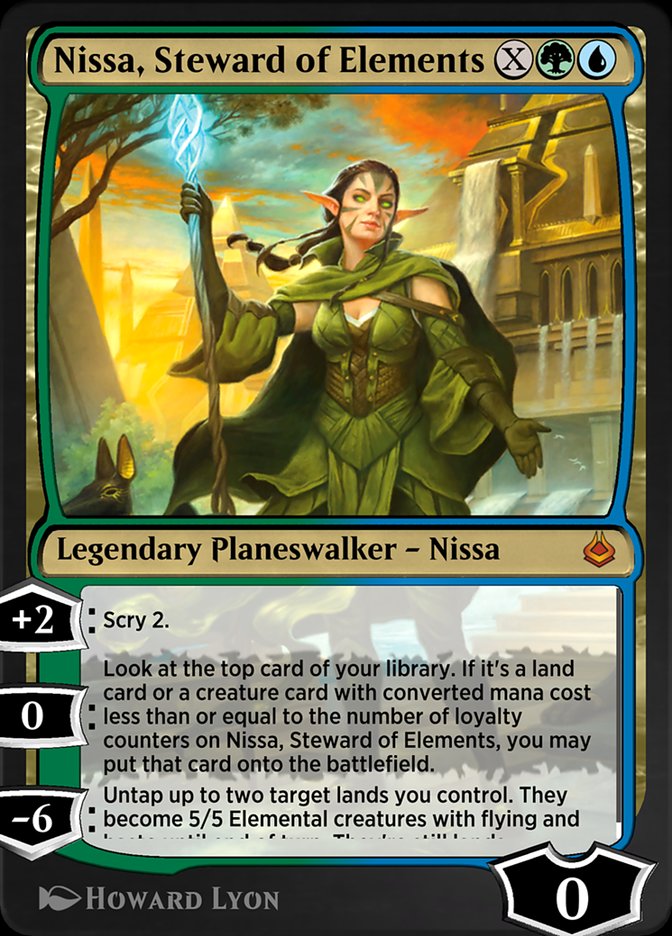
Planeswalkers are powerful tools because they offer a ton of effects and are rarely worse than solid two-for-ones, even when answered. Nissa, Steward of Elements is also flexible thanks to its mana cost. It pairs well with top deck manipulation from cards like Sensei's Divining Top and Jace, the Mind Sculptor to set up its powerful 0 ability.
#22. Rashmi, Eternities Crafter
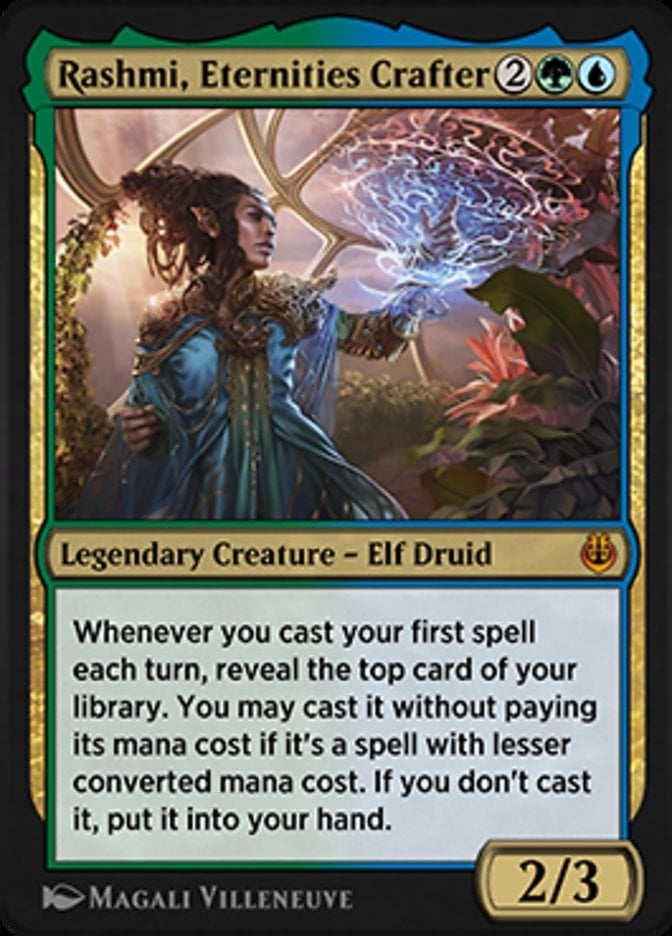
Am I a little biased towards my first and favorite commander? Yes. Is Rashmi, Eternities Crafter still a really solid value engine? Absolutely. Simic has no concerns about casting spells on other players’ turns, so Rashmi can draw multiple cards a turn cycle and even get some value off casting free spells.
#21. Biovisonary
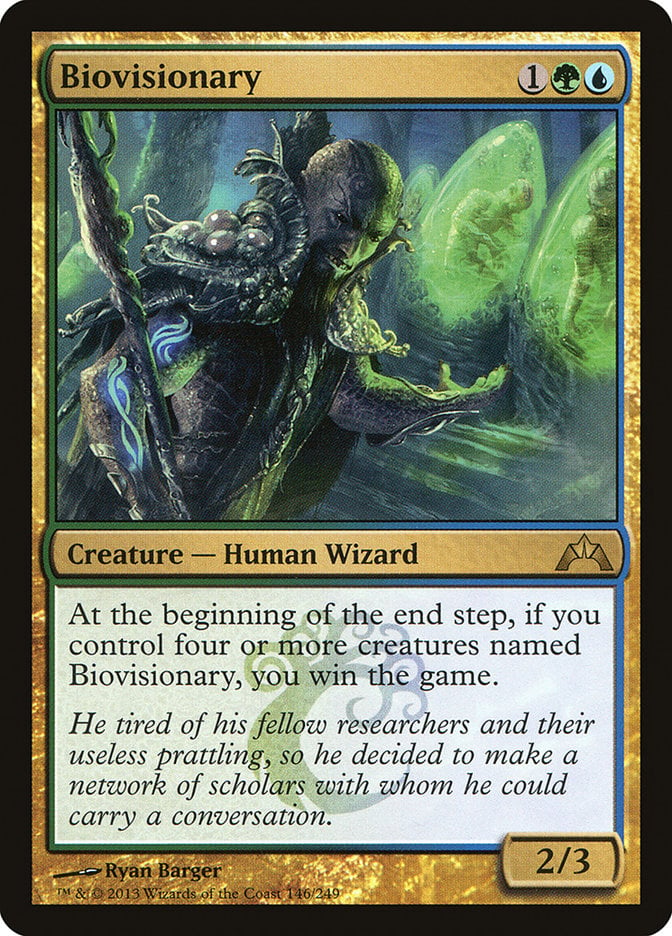
Biovisionary is a delightful alternate win condition. While you can play four of these and pray, the best strategy utilizes Simic’s abundant clone options to make Biovisonary copies. I won’t pretend this is the strongest or most consistent win condition, but it’s fun.
#20. Prophet of Kruphix
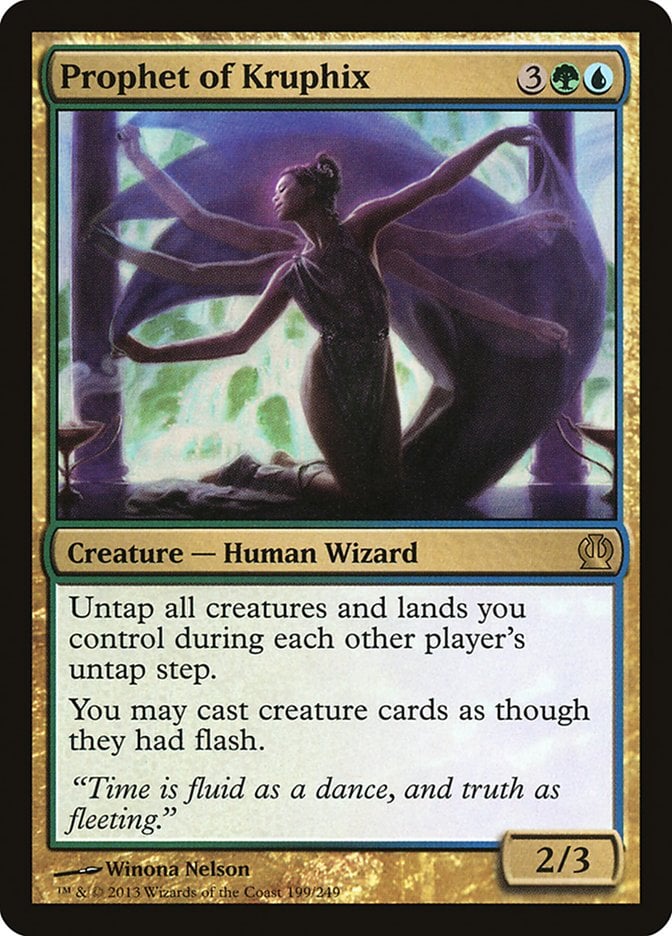
Ranking Prophet of Kruphix is tricky. It’s inarguably powerful but banned in Commander – the format where it holds the greatest relevance. A better Seedborn Muse is a risky investment, but only until the end of the turn you cast it, at which point it doubles your mana and gives you plenty of ways to interact.
#19. Growth Spiral
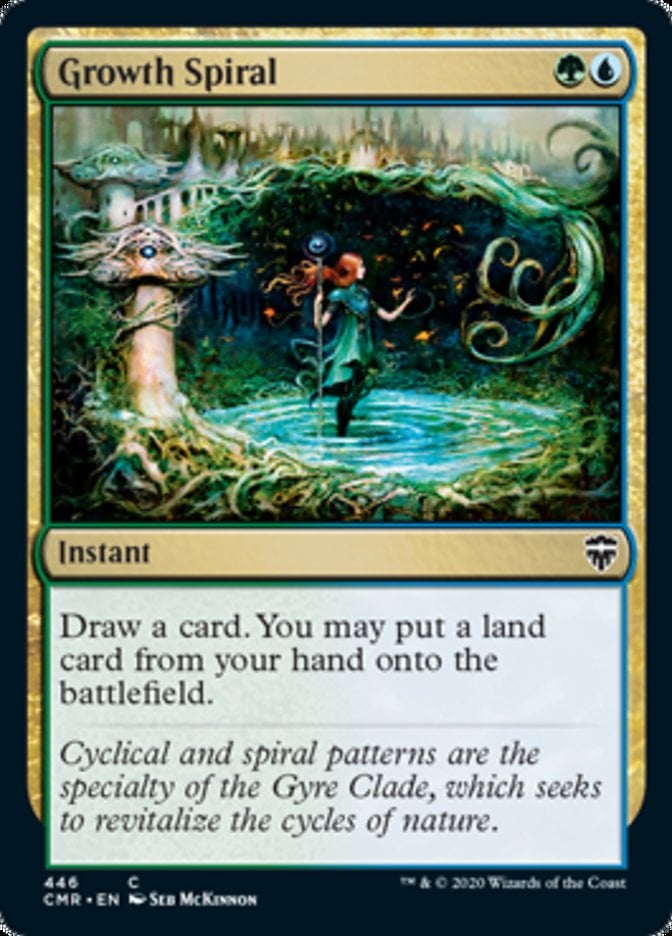
It might seem odd to think Growth Spiral was once deemed too strong for Standard in an era where cards like Oko, Thief of Crowns and Omnath, Locus of Creation were getting banned. Its power lies in simplicity. Drawing cards and making land drops are the best game actions you can take; doing both for so little mana is deceptively powerful.
#18. Mystic Snake
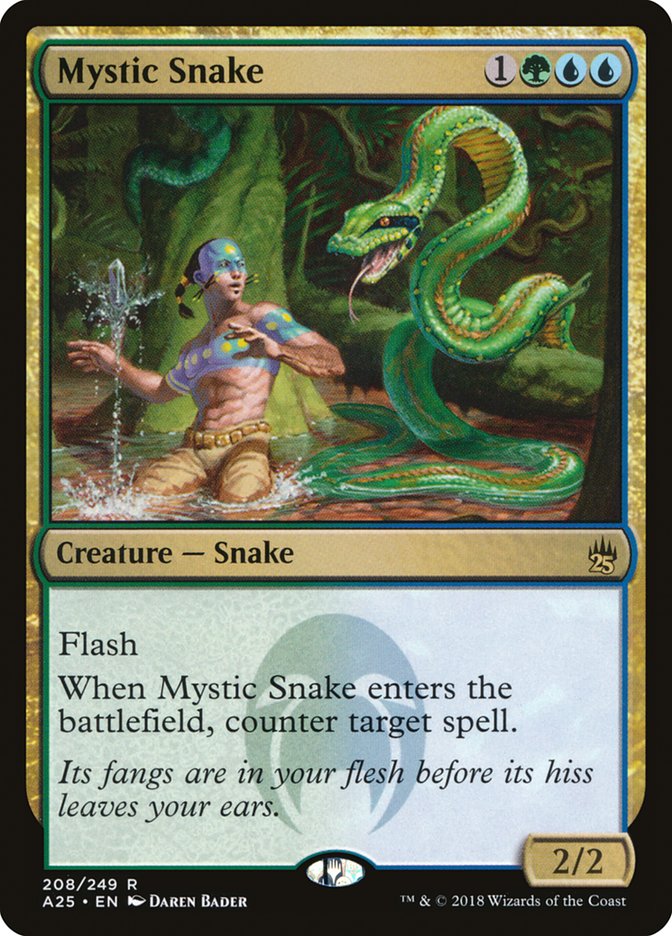
I love a good Mystic Snake. The combination of interaction and board presence provides tempo decks a bit of top-end that prevents their opponent from winning, allowing you to start turning the corner.
#17. Volo, Guide to Monsters

Volo, Guide to Monsters is an interesting card to build around. Copying your creatures is an almost unreasonable amount of value, checked by the need for diversity that makes building around Volo a little more interesting than chucking all the best creatures into your deck.
#16. Sail into the West
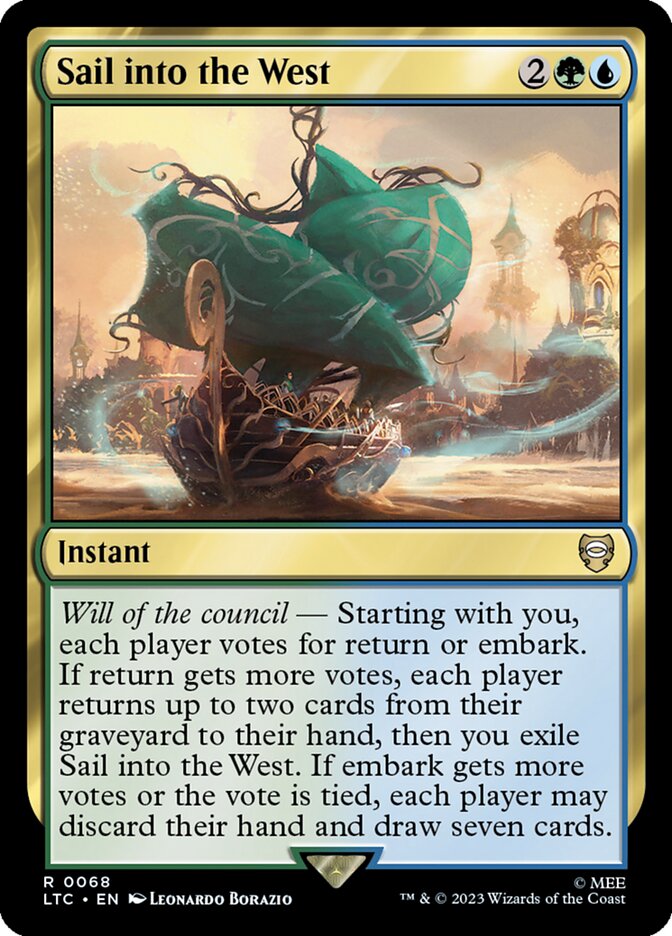
Sail into the West is pretty new, but an instant speed wheel is intriguing. The double Regrowth can also be powerful. This spell always draws you some number of cards; the question is, how often can you get the mode you want?
#15. Double Major
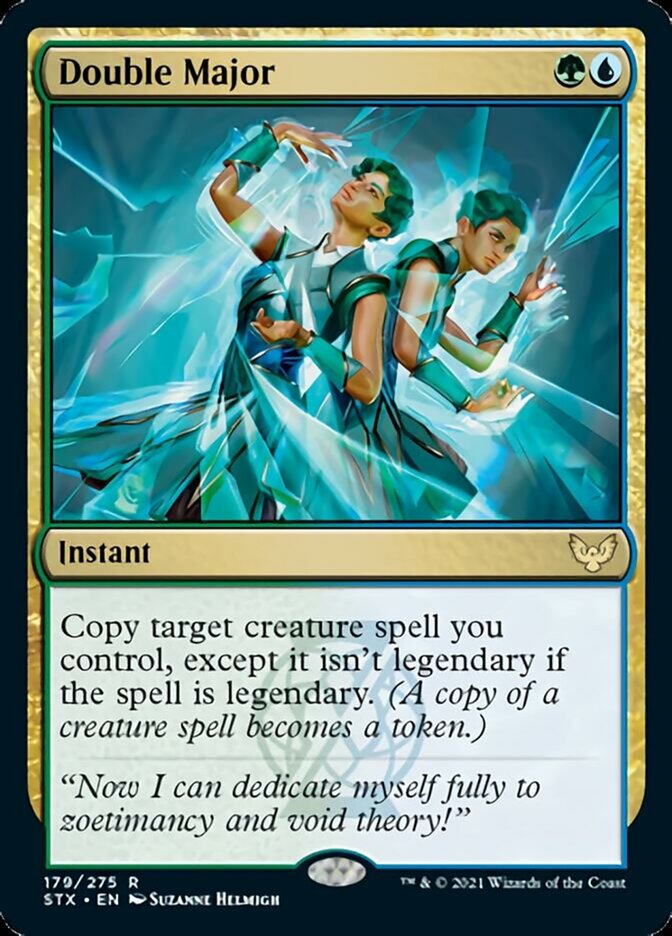
Double Major is one of the most efficient Clone effects we’ve ever seen, with the restriction that it must target a creature while it's on the stack. This closes the window of opportunity to a mere sliver, though it also opens you up to ways to copy Double Major for even more value.
#14. Hydroid Krasis

Once a beast in Standard, Hydroid Krasis is still respectable in any format where dumping a bunch of mana into a serious threat that draws you a couple of cards is a worthwhile investment. The card draw and lifegain coupled with a massive creature stabilizes many boards and turns games on their head.
#13. Thrasios, Triton Hero

Thrasios, Triton Hero has made a mighty impact on cEDH in particular. Getting access to Simic colors and an infinite mana outlet in the command zone makes this cheap commander a fantastic half to many partner pairings.
#12. Aesi, Tyrant of Gyre Strait
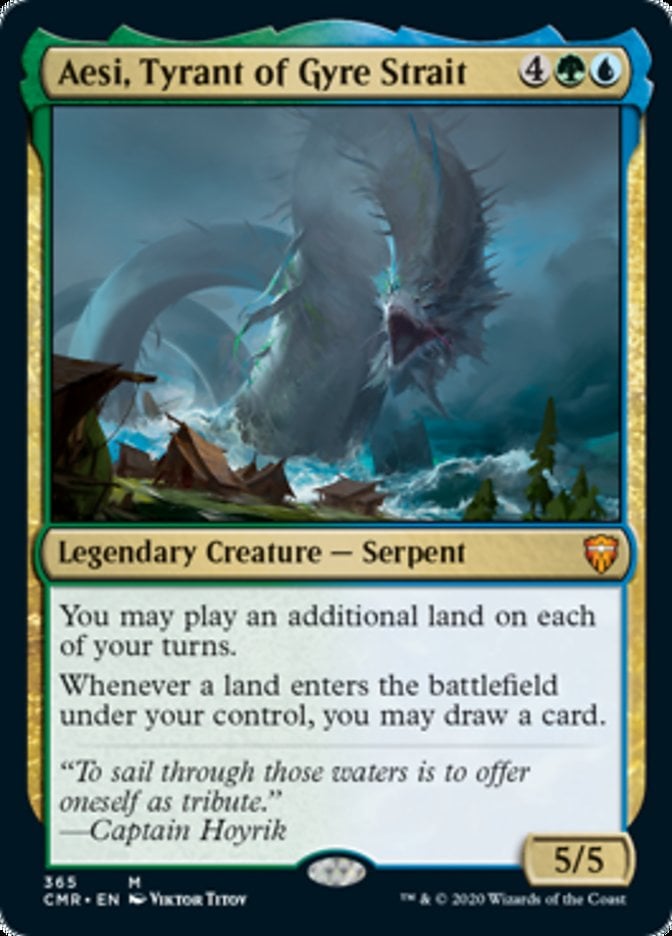
Aesi, Tyrant of Gyre Strait is one of the best Simic commanders. Nothing exploits landfall better than this beast of a card that provides endless card advantage when paired with pretty much any green effect.
#11. Prime Speaker Vannifar

Birthing Pod is one of the strongest artifacts ever printed. Prime Speaker Vannifar gives you that on a stick. Summoning sickness is a huge downside, especially since Vannifar has no means of protecting itself, but haste or a bit of luck turns this into a value or combo engine, depending on how you built your deck.
#10. Shardless Agent

Shardless Agent has had a tremendous impact on Modern, strengthening strategies that rely on cheating out Crashing Footfalls or Living End cheaply and effectively. Cascade is broken, and this creature shows that off in true form.
#9. Bring to Light
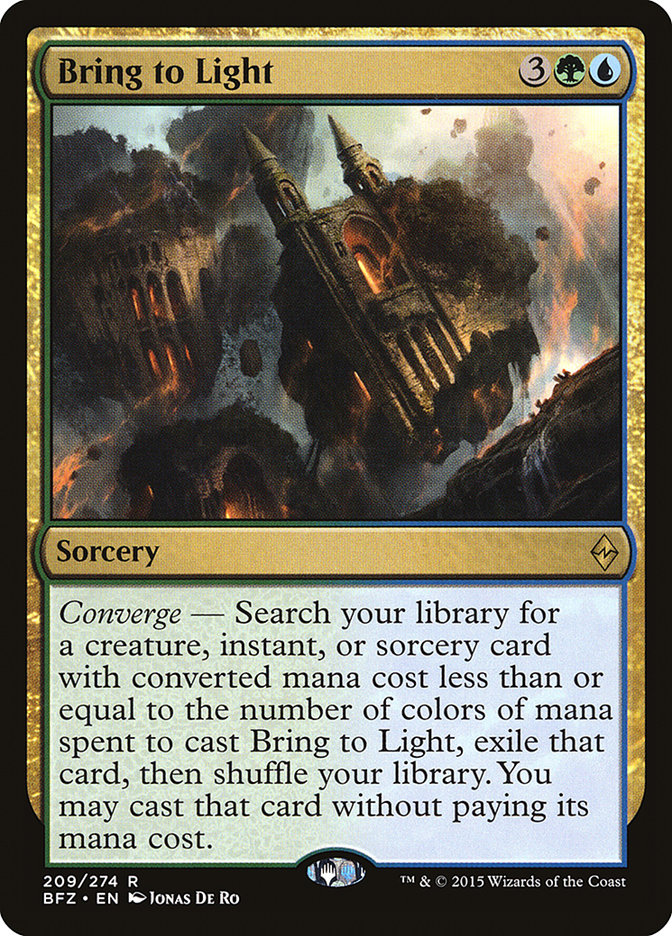
Perhaps it’s cheating to put Bring to Light here as it’s secretly a 5-color card, assuming you want the full value, but you can’t deny its power. Currently, its primary home is in Pioneer lists using it as extra copies of their best cards, like Omnath, Locus of Creation.
#8. Enigmatic Incarnation
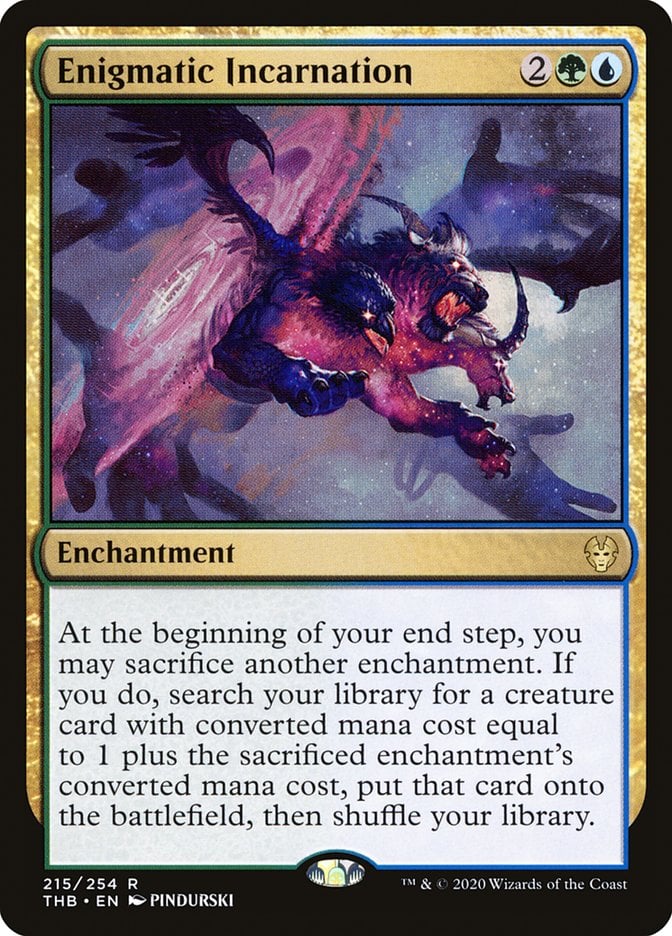
Another solid combo card, Enigmatic Incarnation rewards careful deckbuilding by letting you cheat creatures into play. You’re netting mana as soon as you can find a 5-drop, but this can function similarly to Shardless Agent by building your deck around finding specific cards.
#7. Ice-Fang Coatl
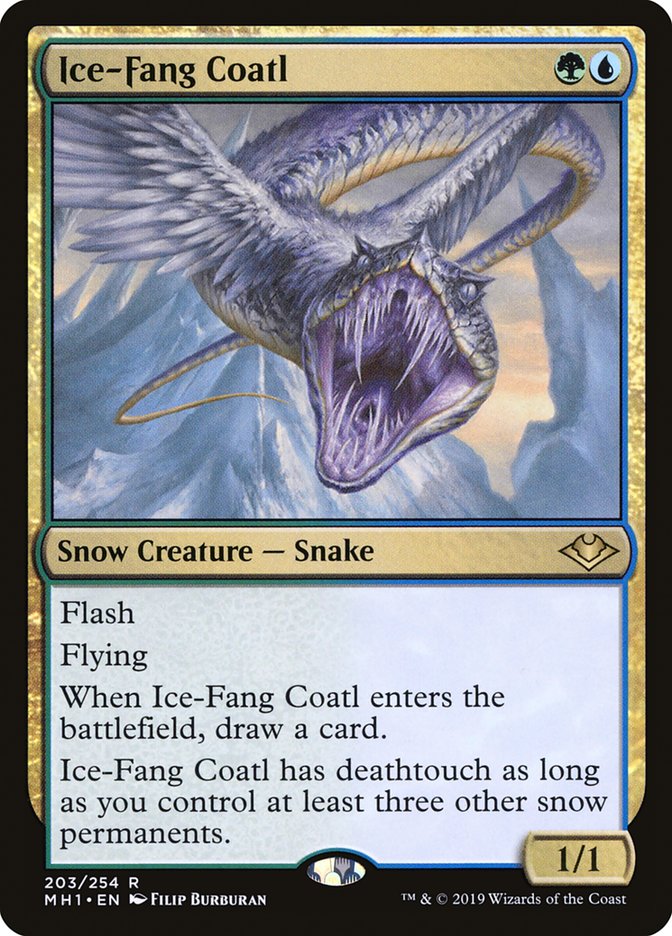
What if Baleful Strix had flash? You’d get a fine card in Ice-Fang Coatl. This ran rampant when Arcum's Astrolabe was still in Modern, but it’s still a solid playable that asks you to add some snow basics to your mana base.
#6. Risen Reef
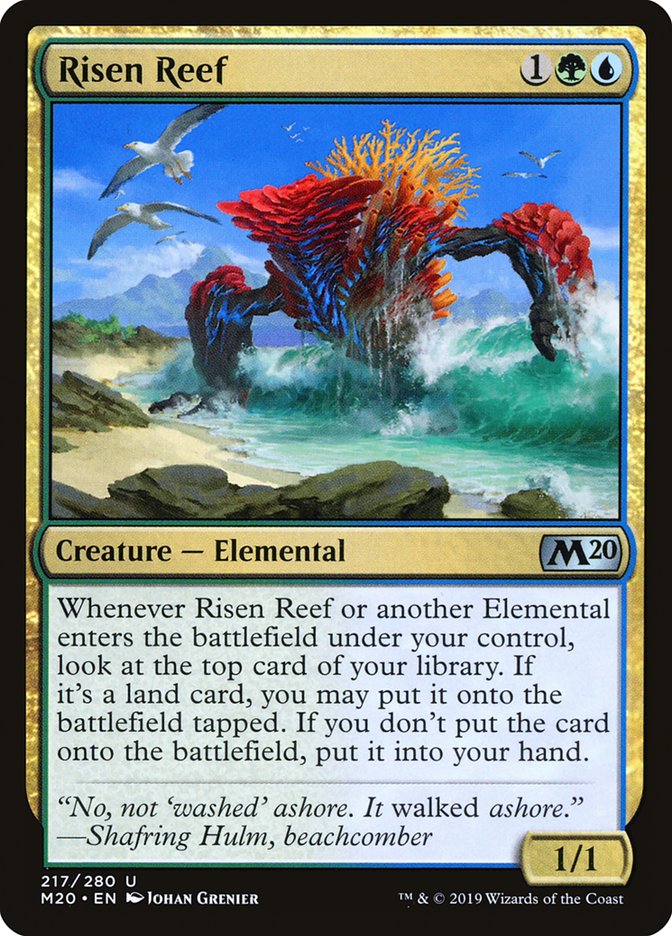
Coiling Oracle is very solid. Now imagine getting that trigger multiple times a turn. Risen Reef is often seen alongside Omnath, Locus of Creation for tons of value. It just does all the strong things while replacing itself at a minimum.
#5. Adrix and Nev, Twincasters
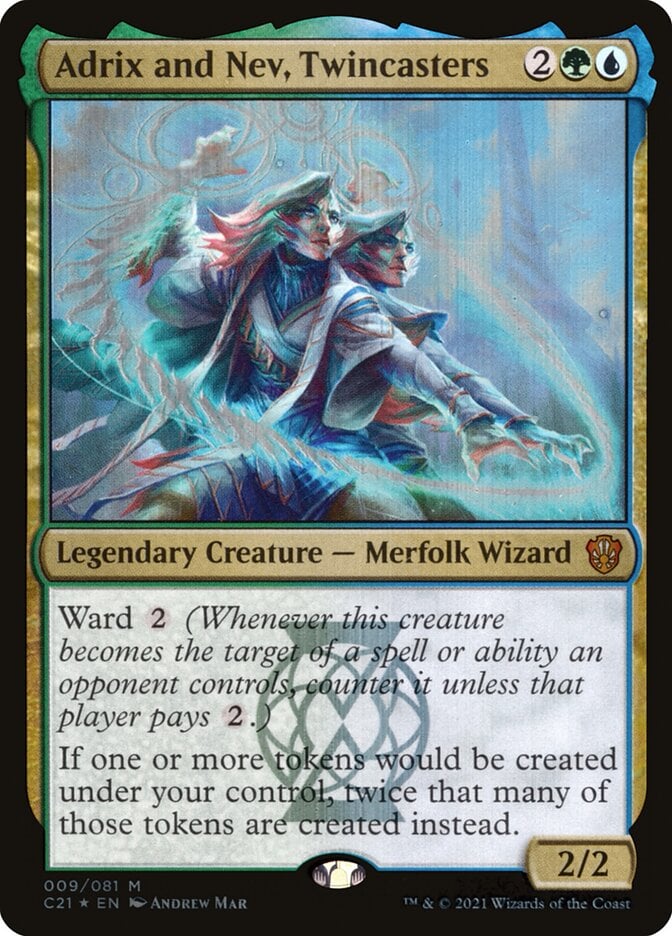
Getting a token doubler on a creature is pretty nice, especially when said creature has ward 2. That offers Adrix and Nev, Twincasters just enough protection you can often double at least a few tokens off of them before they bite the dust.
#4. Kinnan, Bonder Prodigy
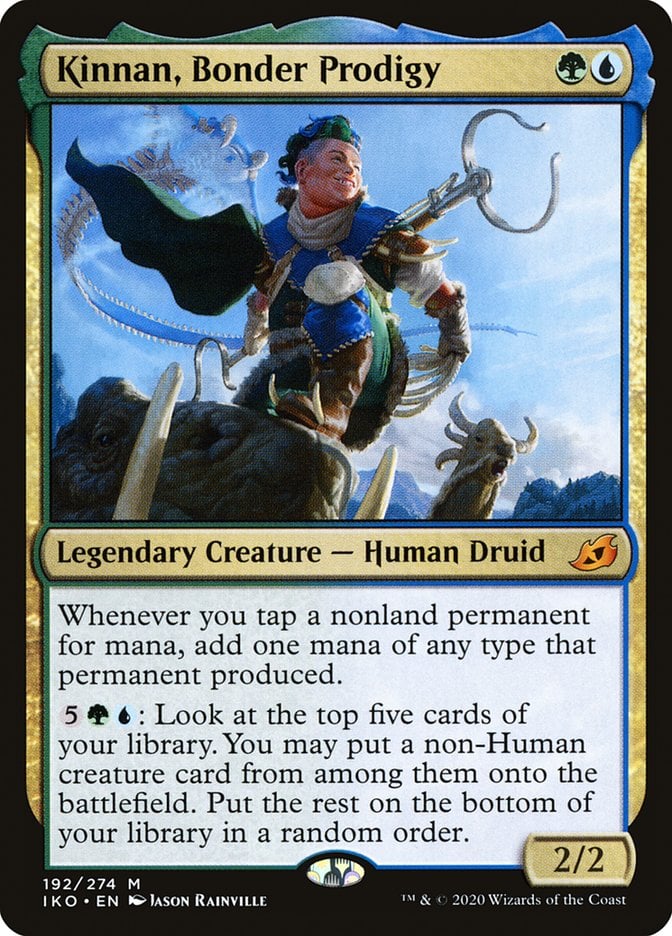
Kinnan, Bonder Prodigy is kind of nuts. There’s the infinite with Basalt Monolith, but even playing this “fairly” means doubling your mana and getting an outlet for all that mana. Cards like Void Winnower and Jin-Gitaxias, Progress Tyrant are just a few of the exciting options to drop in with that ability.
#3. Neoform
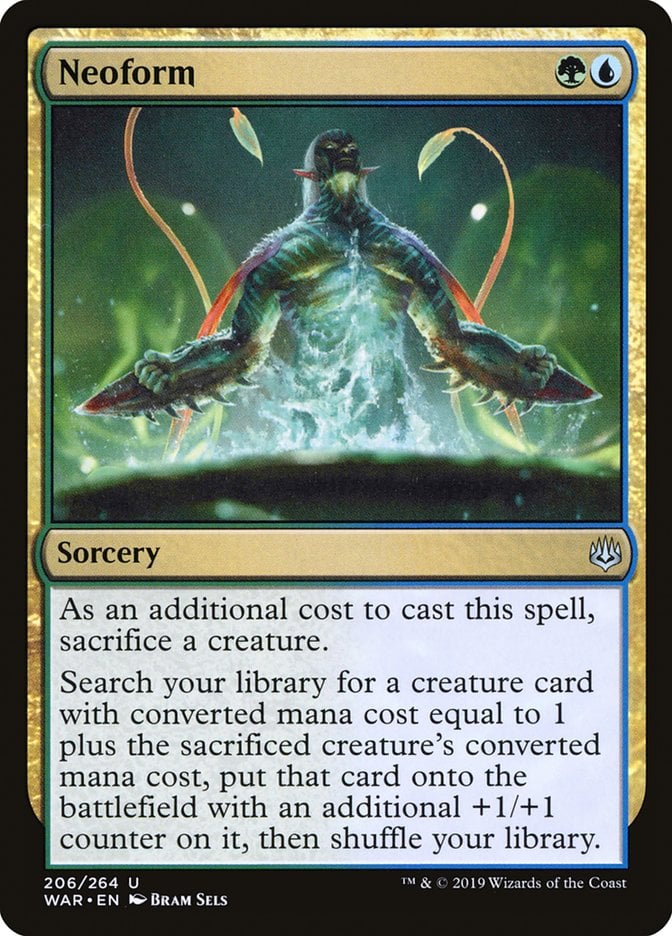
Once upon a time, Neoform was the basis of a Modern deck that either put a turn one Griselbrand into play or lost. Neofrom is still an exceptional card. A 2-mana tutor that puts its target right into play, often netting a ton of mana value in the process, is well worth building around.
#2. Uro, Titan of Nature’s Wrath
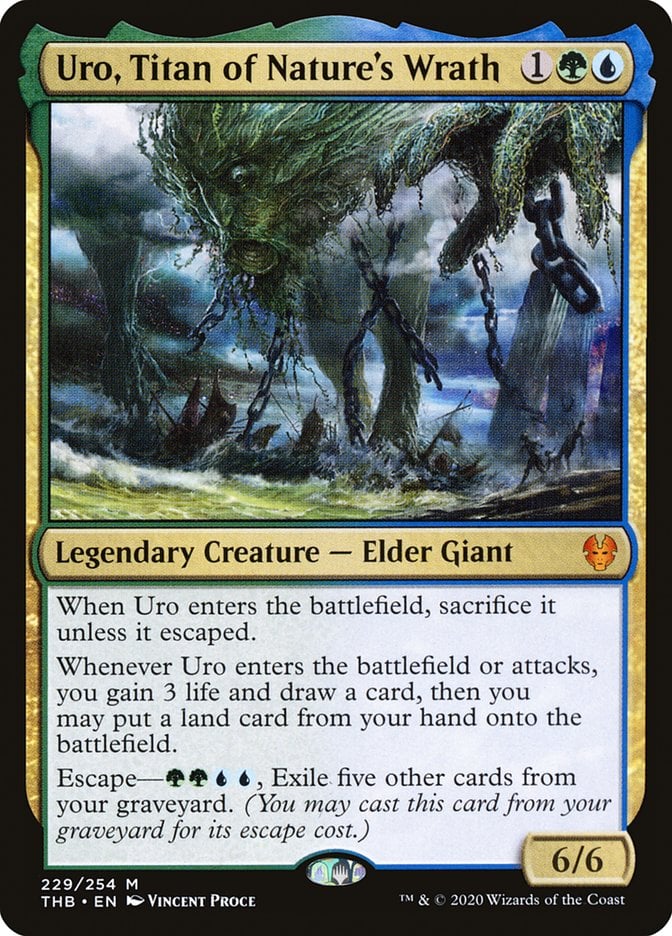
I remember playing endless Uro-centric mirror matches in Standard. Uro, Titan of Nature's Wrath provides so much steady value throughout a long game. It accelerates you early, gives you a bit of life to take the edge off aggro decks, and presents a resilient threat that’s tricky to answer without exiling the card or your graveyard.
#1. Oko, Thief of Crowns
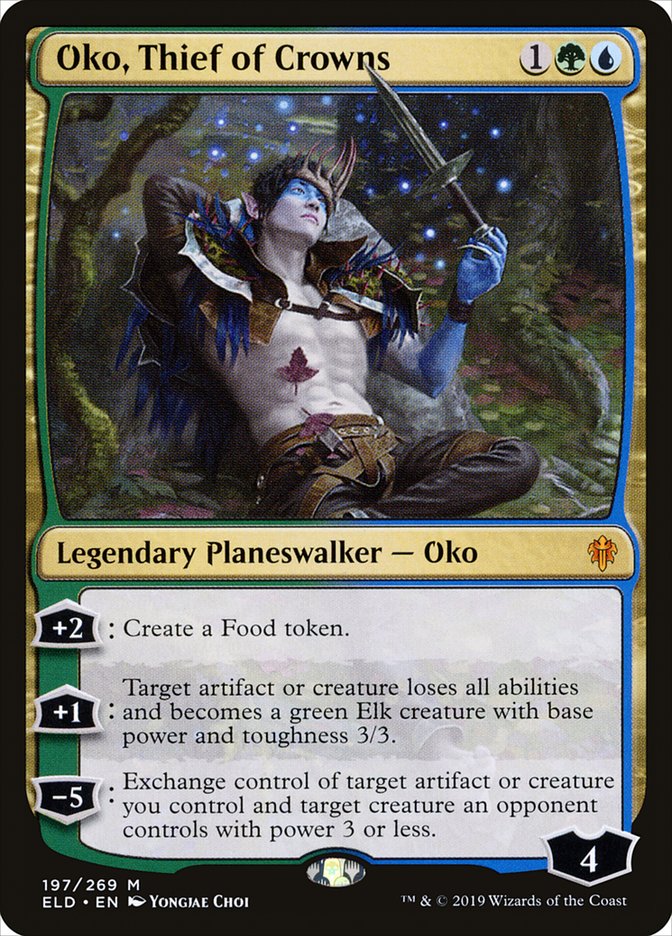
Who could reign over this list but good ol' Broko? Oko, Thief of Crowns is simply a design mistake. Something must have been misprinted on this card as it went from concept to print. The ability to generate an army or completely blank your opponent’s best creatures and artifacts has led to Oko’s banning in pretty much every format you could play it in. And even worse – he’s hot.
Best Simic Payoffs
The best payoffs for Simic cards are running lands and spells. I mean it. The color pair is just incredibly solid because it’s two of the most value-oriented colors in Magic paired together. Blue card draw with green creatures and a healthy mingling of both color identities makes for some broken cards. That said, there are a few more specific payoffs.
You can play a lot of different archetypes with Simic cards, but two with incredible support are +1/+1 counters and landfall.
To exploit +1/+1 counters to their fullest, you want to focus on small, efficient creatures that you’ll grow over time. There’s no point in dumping mana into an already-large creature to make it larger when you can have an army of big bois. Mana generation goes well with a bunch of cheap cards; creatures like Gyre Sage and Kami of Whispered Hopes help here.
If you want to exploit landfall, a few choice landfall cards like Greensleeves, Maro-Sorcerer and Scute Swarm let you take over the game while utilizing cards like Uro, Titan of Nature's Wrath and Risen Reef to make all those extra land drops.
What Is Simic Good at in MTG?
Simic is best at performing basic game actions. This is the color of landfall, of Growth Spiral, of Up the Beanstalk. It’s the mingling of card advantage and the best creatures.
The strongest game actions you can take in Magic are making land drops and drawing spells. Simic’s strength comes from facilitating both these actions with its cards. Simic value piles are a real thing for this simple truth. The best way to build Simic decks is to find a gameplay aspect and get the most from it.
Wrap Up

Bring to Light | Illustration by Jonas De Ro
Even if Simic isn’t the most busted color pair in Magic, it’s got to be close. A color pair whose power rests in exploiting basic game actions to their fullest creates plenty of cards that generate more value than other decks can keep up with.
In Commander especially, such value engines can let a skilled Simic pilot grind out the rest of the table. What’s your favorite Simic card? What’s your favorite color pair? Let me know in the comments or on the Draftsim Discord!
Stay safe, and keep Simic!
Follow Draftsim for awesome articles and set updates: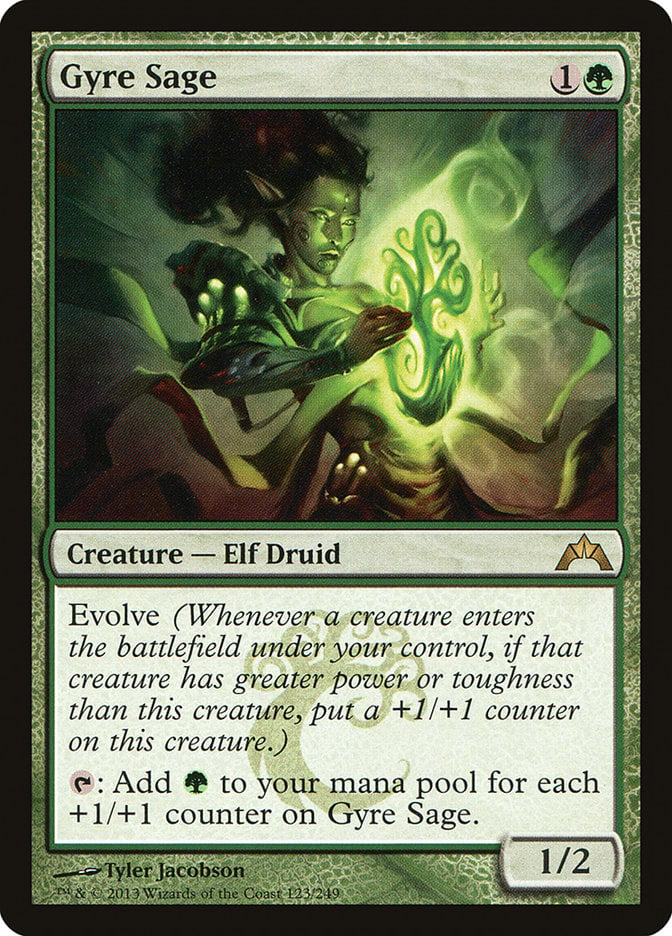
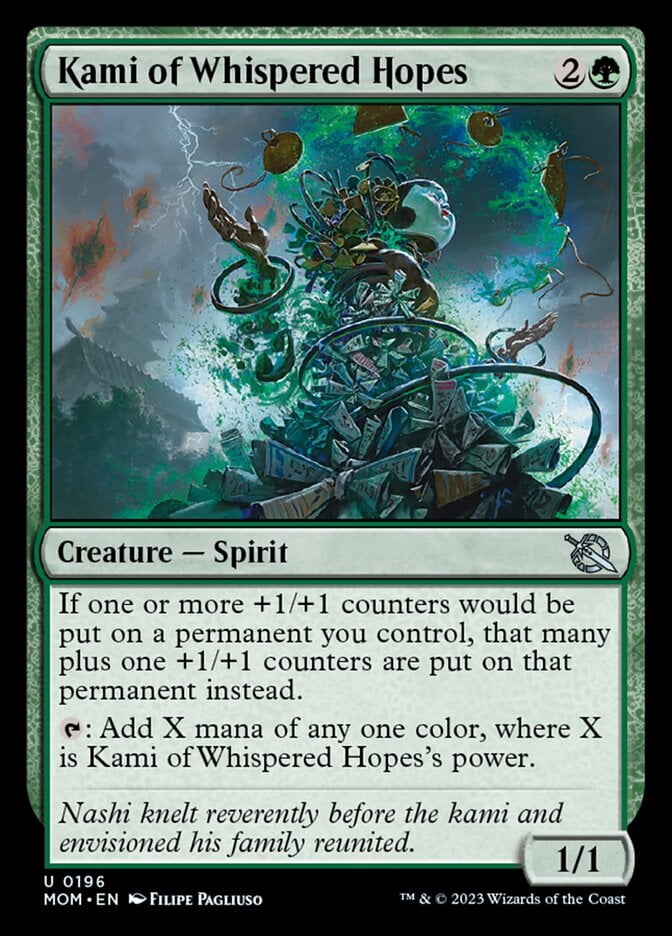
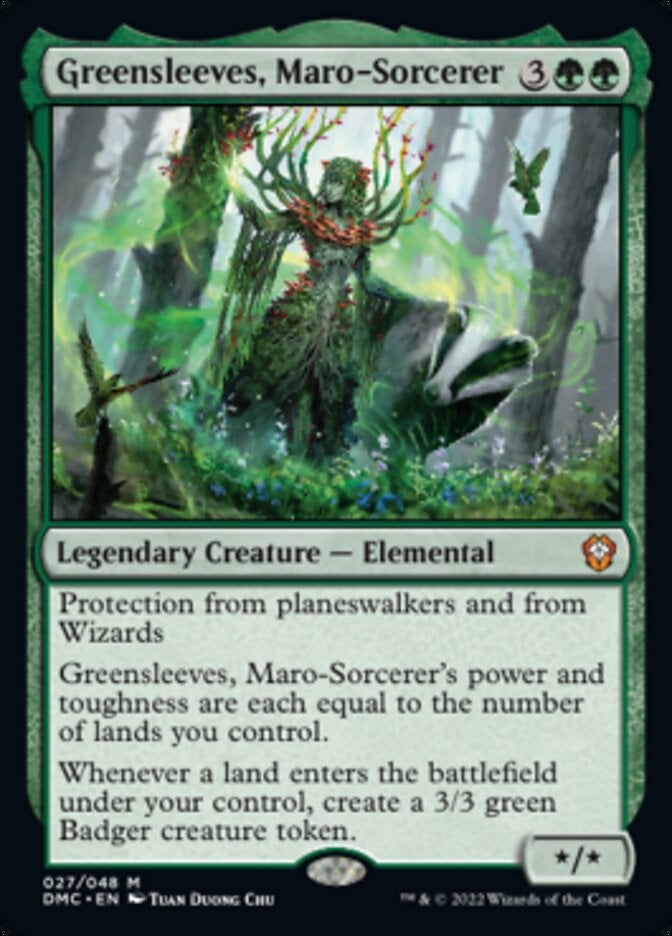
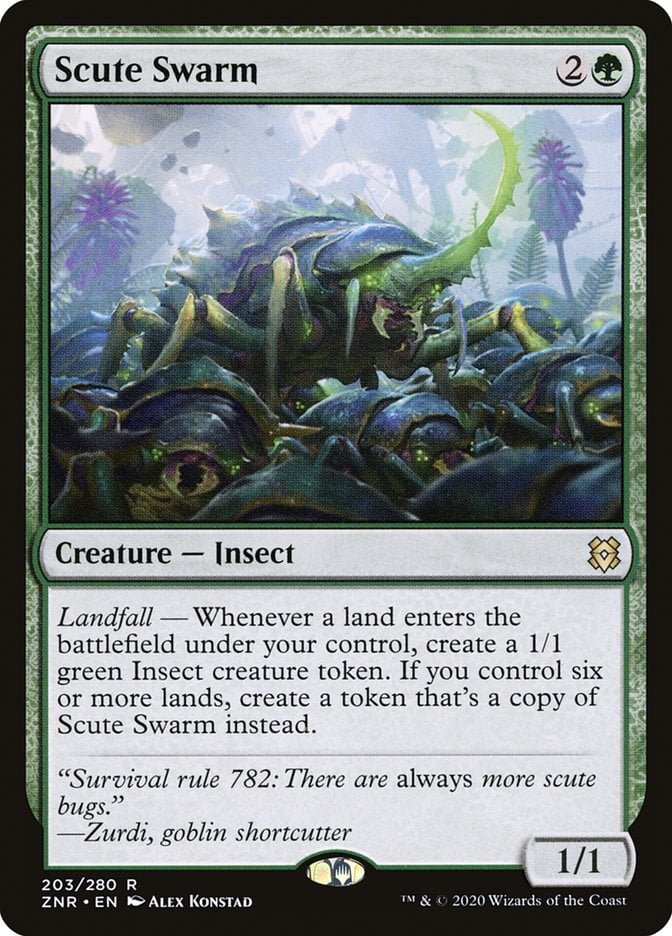



Add Comment